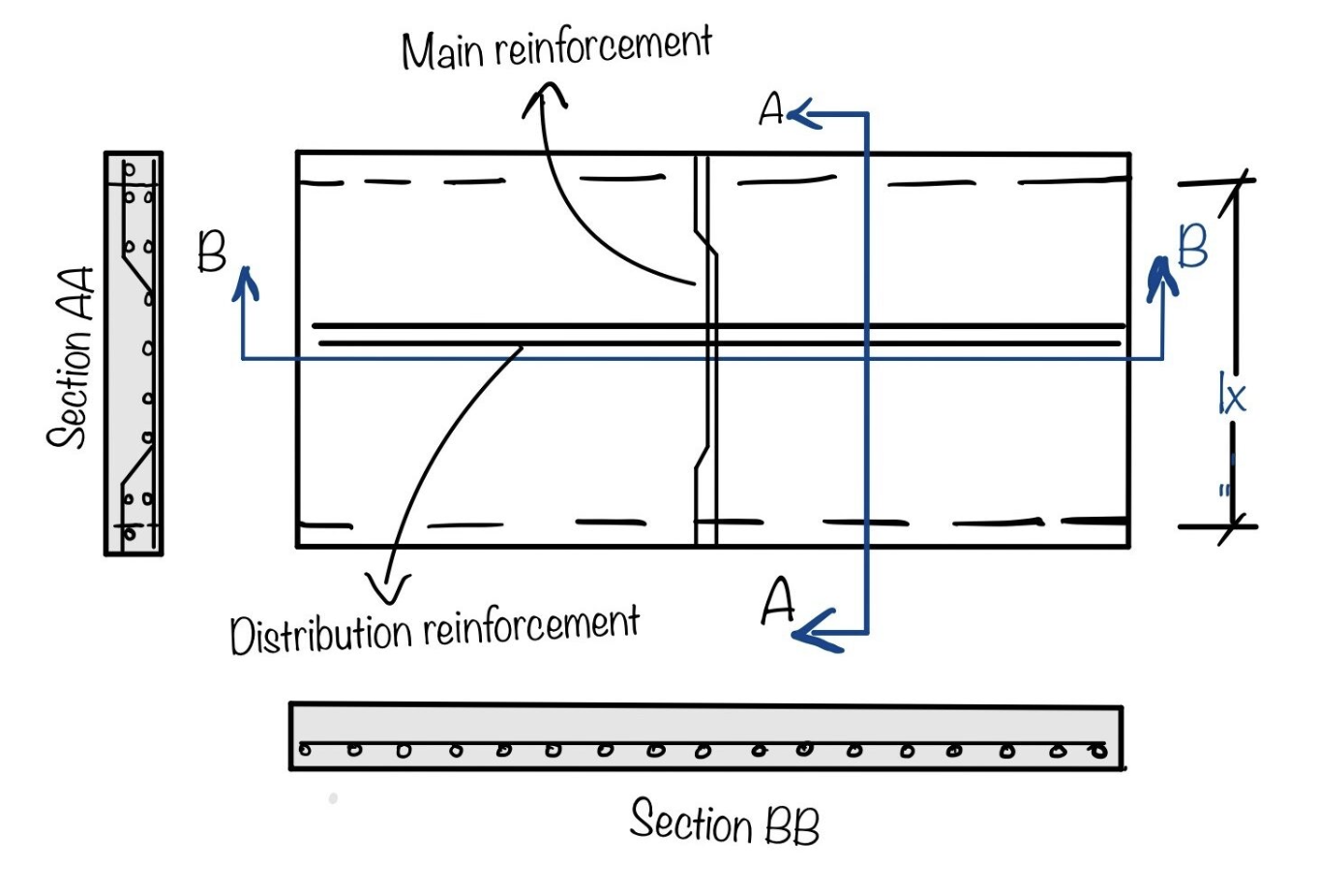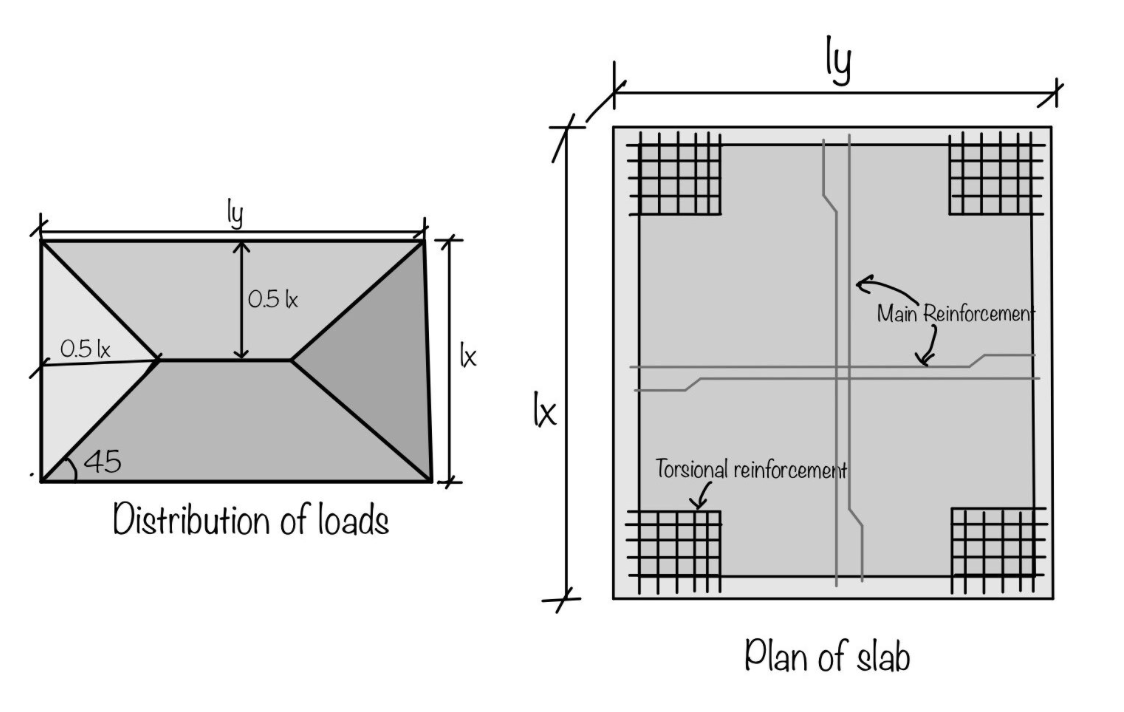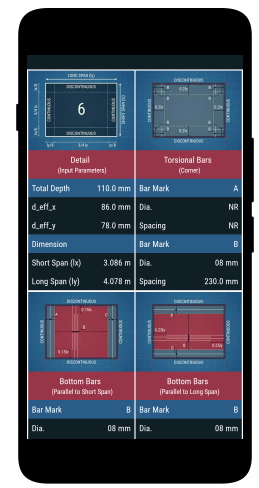Slabs, in the field of civil engg., play a pivotal role in the design and construction of various structures. They are imp. parts that provide strength, and functionality to residential buildings, commercial, and industrial facilities. In this blog, we will delve into an introduction to slabs and will explore their types, functions, design considerations, and construction techniques. By understanding the diverse aspects of slabs, civil engg students can acquire the knowledge and skills necessary to make informed decisions and excel in their future projects. So, let’s embark on this journey into the world of slabs and uncover their remarkable imp. in the realm of civil engg.
Definition
Slabs are horizontal, flat elements that form the floors, roofs of buildings. We design slabs to distribute loads evenly to the beams, columns, and walls.
Types of Slabs
Civil egg. students must grasp different slab types to select the appropriate one for projects, considering requirements, loads, and aesthetics. Different types of slabs are as follows:
One-Way Slabs
One-way slabs are designed to resist the loads primarily in one direction. They have supports on two opposite sides, and the longest span is considered the continuous span. The bar is placed perpendicular to the shorter span. One-way slabs are suitable for rectangular rooms or small buildings. They are relatively simple in design and construction.

Check this post to know the step by step procedure of one way slab.
Two-Way Slabs
One-way slabs resist loads in one direction, with supports on two opposite sides. The longer span is the continuous span, and place the bars perpendicular to the shorter span. Two-way slabs can be further classified into two types: flat plates and flat slabs.
- Flat Plates: Flat plates are the simplest type of two-way slabs. They do not have beams or drop panels, resulting in a uniform thickness throughout the slab. Use of flat plates are common low rise buildings and structures with small spans.
- Flat Slabs: Flat slabs are similar to flat plates but include drop panels or column capitals to enhance the load – carrying capacity and stiffness. Flat slabs are suitable for buildings with larger spans and higher loads, such as high rise structures.
- Flat Slabs with Beams: Flat slabs with beams extend flat slabs by introducing peripheral beams for support and stiffness. These beams are typically deeper than the slab thickness and are placed around the perimeter and intermediate locations. Flat slabs with beams offer increased resistance to shear and moment forces, making them best for structures with larger spans and heavier loads.

Check this post to know the step by step procedure of two way slab.
Waffle Slabs
Waffle slabs consist of ribbed beams and a flat slab on the top. The ribs form a grid like pattern, creating voids between them. These voids reduce the weight of the slab while keeping its integrity. Use these types of slabs where longer spans are required without support. They offer a high strength to weight ratio and allow for the installation of services within the voids.
Ribbed Slabs
Ribbed slabs, also known as band beam slabs, consist of a series of parallel R.C.C. beams with a slab between them. The beams provide support and increase the load carrying capacity of the slab. Ribbed slabs are used for buildings with long spans. They offer good strength, reduced weight, and freedom in design.
Functions of Slabs
Understanding the functions of slabs is crucial for civil engg. students as it enables them to appreciate the role of slabs in overall design. By considering these functions during the design and construction phases, engineers can ensure the safety, and functionality of the buildings they design.
- Load Distribution: Slabs play a crucial role in distributing loads evenly across the supporting elements of a structure, such as beams, columns, and walls. They transfer both dead loads (the self weight of the structure) and live loads (occupant loads, furniture, equipment) to the underlying structural members.
- Strength and Rigidity: Slabs significantly enhance the overall strength and rigidity of a building. They are designed to resist the bending, shear, and deflection caused by applied loads. When combined with the supporting elements, such as beams and columns, slabs form a cohesive structural system capable of with – standing the forces induced by the loads.
- Integration with Structural Systems: Slabs integrate with other systems, including beams, columns, and walls, to create a robust and efficient building structure. By properly of slabs with the design of other structural elements, engineers can achieve a balance load transfer to min. the risk of failures and optimise the performance of the building.
Design Considerations
Civil engineers can develop slab designs that meet requirements, adhere to safety standards, and ensure the durability and functionality of the building. Collaboration with architects, engineers, and construction professionals throughout the design process is crucial to achieving an optimal and successful slab design.
- Structural Analysis: Structural analysis is a basic step in slab design. It involves assessing the behavior of the slab under different loading conditions to determine the required size, bars, and overall stability.
- Load Calculation: Accurate load calculation is essential to ensure the slab can safely support the loads. Dead loads (weight of the structure, finishes, and fixed equipment) and live loads (inmate loads, furniture, movable equipment) must be calculated according to IS codes and standards. Additionally, consideration should be given to imposed loads, such as snow loads, wind loads, or seismic forces, depending on the location and building type.
- Deflection Control: Excessive deflection in slabs can affect the serviceability and functionality of a structure. Therefore, deflection control is an important design consideration.
- Building Codes and Standards: Compliance with the building codes and standards is crucial for the design of slabs. Codes provide regulations and guidelines for load requirements, design methods, materials, and safety factors.
Construction Techniques
Construction techniques refer to the specific methods employed during the construction of slabs in civil engineering. These techniques encompass a range of activities, from preparing the site to placing and finishing the concrete. The critical construction techniques involved in slab construction are as follows:
- Site Preparation: Before construction can begin, we must prepare the site. This involves clearing the area of any hurdle, or debris.
- Formwork Installation: Formwork refers to the temporary structures that shape and support during the casting process.
- Reinforcement Placement: Reinforcement bars commonly made of steel. Place the bars within the formwork according to the design specifications and detailing requirements.
- Concrete Placement: Once the formwork and reinforcement are in place, place concrete within the formwork. Prepare the concrete mix, depending on the design requirements. It is essential to ensure proper workability, uniformity, and concrete compaction during placement to achieve a dense and durable slab.
- Compaction and Consolidation: After concrete placement, compact and consolidate the concrete to remove any air voids or potential weak spots. Use vibrating equipment or by manual methods, such as rodding or tamping to efficiently compact and consolidate.
- Finishing and Curing: Finishing techniques include floating, troweling, or brooming the surface. Proper curing is essential to maintain moisture in the concrete, allowing it to gain strength and durability over time.
- Quality Control and Inspections: Throughout the construction process, quality control measures and inspections are carried out to ensure compliance with design specifications, codes, and standards.
Conclusion
Slabs are basic elements in civil structures that provide integrity, support loads, and ensure functionality in various building projects. The following key take- away points are as follows:
- Importance of Slabs: Slabs distribute loads, add strength, and integrate with other systems.
- Types of Slabs: Understand one-way, two-way (flat plates, flat slabs, flat slabs with beams), waffle, ribbed.
- Design Considerations: Analyze,cal. loads, control deflection, meet codes, take help of professionals.
- Construction Techniques: Prep site, install formwork, place bars, pour concrete, compact, finish, cure, and control quality.
- Quality Control: Monitor mix, test concrete, inspect bars, assess workmanship for defects, ensure corrective actions.
Slab design
- RCC Slab Design is a free app for designing one way and two way reinforced concrete slab systems as per Indian Standards.
- RCC Design and detailing could be performed for ten different boundary conditions specified in IS456:2000
- Option to save the design projects in local storage.
- Detailed calculation steps presented for verification and validation.

This article was crafted by a group of experts at eigenplus to ensure it adheres to our strict quality standards. The individuals who contributed to this article are:
Author


